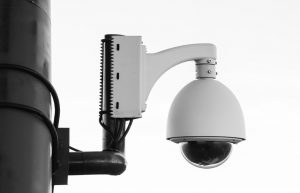Just as the digital signage industry grows, its underlying technology advances constantly. No longer is it just a plain display with rotating content, oblivious to who is looking at it. Digital signage has become an intelligent solution which adapts to its surroundings through the data it collects about the people in front of it.
With digital signage becoming smarter through data, we take a look at the privacy concerns this has caused, and how this came about. We want to clarify whether or not you should be concerned about your privacy when it comes to businesses collecting data about their digital signage audiences. Lastly, we will also examine what changes help regulate privacy. We’ll see how the issue has been dealt with on city or state level in some instances.
The matter of privacy
At first, if a digital signage display was to adjust its content to specific viewers, it required direct input from them. However, digital displays can now adapt to the world around them using their own senses, without much input from the user.
When cameras and sensors get involved, we face a common issue on the user side. The fear is that this technology stores information about an individual and all the traits defining them. Not only their approximate age and gender but their identity as well as behavioral patterns, such as shopping preferences. Most people don’t mind this when they can consent. E-commerce businesses store data to facilitate shopping. In your online profile, your shipping and payment details are stored as well as your search history. The site then uses this data to show you items relevant to your past searches and purchases. Most people have no objection to this and willingly allow it by registering an account. It’s the factor of permission that plays the greatest role here. Is walking by a digital display a form of consent?
Before we dig deeper into how this matter may be resolved, let’s take a closer look at how and why companies might collect personal data.
Why do companies use facial detection
We must draw a line between facial detection and facial recognition, as these terms are often used interchangeably even though they shouldn’t be.
Facial detection is an encompassing term. It refers to the technical ability to establish there is a human being, hence only “detection”. Interestingly, facial detection algorithms typically search for human eyes, as they’re the easiest to detect, after which come other facial features. With digital signage, facial detection helps to simply establish the audience category the viewer belongs to. For instance, it will establish you are a man approximately in your 30s, but it will not know your name is John or otherwise link to your particular persona.
The value of data for digital signage
For a business, knowing what type of person is in front of the display is important as this allows to show specific content relevant to their type. This data is very important in order to make digital signage work and compete with other mediums, especially social media and television. Online, data collection is much easier as every activity is registered. Online algorithms establish the preferences of a user based on their actions. In the physical world, obtaining this data is more challenging, making it all the more valuable.
When it comes to data collection through facial analysis, many traits such as gender and age can be of high value. But another interesting factor to register is the factor of mood. Westfield, a popular Australian shopping center relies on facial detection to gather this data type. Mood is more difficult to detect than gender or age and many outside factors may influence it. But the 80% success rate they have on mood detection shows its validity. The system can establish how people feel at the time they view the display. However, it cannot establish if their current mood came from seeing the specific brand or product. It can detect though how they feel at that certain time of the day with many other topics on their mind.
The real “monster”: facial recognition
Facial recognition on the other hand is a more specific and precise use of facial detection. It recognizes you as the individual you are. It scans your facial features and relates them to those in an existing database. This is why facial recognition should only be used in data-sensitive areas and with legitimate authority. In most instances it isn’t warranted in public settings for advertising technologies such as digital signage.
In short, the main reason people feel uncomfortable with a camera analyzing them is because they feel their identity is spied on, when in fact they are merely placed in a category. They experience facial detection, but they think they’re experiencing facial recognition.
A rising concern for privacy
Whenever there is marketing money involved, there is a great benefit from data being collected about the audience. With advertising on TV, advertisers want to know the target audience of their slot and how many people tuned in. In the same way, online ads fall into segments based on social media profiles. As effective as it may be when a message reaches the audience most receptive to it, too much personalization with ads will lead to rejection for fear of spying and surveillance. This issue has not gone unnoticed.
In 2011, the Digital Signage Federation (DSF) adopted certain privacy standards for its members and affiliates. Their companies must ask for direct consent from the consumer before collecting any identity-specific data. Walking past a sign is not a form of consent. But the display counting how many people walked past it in a local mall does not track individual people. It just records overall foot traffic. By DSF standards, companies also may not collect data of minors under 13 years of age.
What does the future hold?
From the legal side, wrongfully used facial recognition hasn’t attracted enough attention thus far to warrant more aggressive measures. However, certain cities are attempting to limit the use of facial recognition in an attempt to protect the privacy of their citizens. San Francisco, Somerville, and Oakland passed laws to limit the usage of facial recognition.
As the use of this technology draws more attention to itself, the legality of this topic becomes more specific. The reason it hasn’t been specified thus far is simply because people are unaware when it’s done legally or illegally. In some cases, collecting data through facial recognition might be unlawful. But if people don’t know it’s collected without their consent, they can’t do much about it. This issue has been the focus of many recent legal policies. Still, most people don’t seem to be bothered enough by it. Facebook, for example, suggests tags for photos of your or your friends based on facial recognition of your existing pictures. There is a setting to opt out of facial recognition but most people are unaware of this setting. And yet, there hasn’t been a massive public outcry about it.
The issue of privacy has been a delicate balancing act since we can remember. As data collection methods improve, it will continue on this path. Governments are polishing data protection and privacy policies more and more. But will these changes eventually prohibit or limit the use of facial detection on a bigger scale once it attracts sufficient attention to itself? We will have to wait and see.
In the meantime, take a look at our recent post about cities banning digital signage to see other instances where digital signage received a slap on the wrist.









